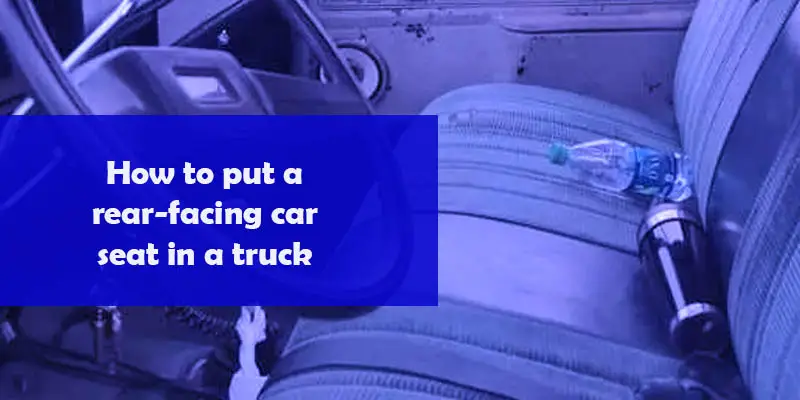Putting a rear-facing car seat in a truck can be a bit more challenging than installing it in a car due to the size and layout of the vehicle. Here are some tips to help you properly install a rear-facing car seat in a truck:
- Locate the LATCH anchors: Most trucks have LATCH anchors in the back seat, which are used to secure car seats. Look for the plastic connectors located between the seat cushions and the backrest.
- Position the car seat: Place the car seat in the center of the back seat, as this is the safest position for a rear-facing car seat.
- Attach the car seat to the LATCH anchors: Follow the instructions provided with the car seat to properly attach the seat to the LATCH anchors. Make sure the car seat is securely attached and not able to move more than an inch side-to-side or front-to-back.
- Adjust the recline angle: Adjust the recline angle of the car seat as directed by the manufacturer’s instructions. This will ensure that the car seat is installed at the correct angle for a rear-facing installation.
- Tighten the seat belt: If your truck does not have LATCH anchors, you will need to install the car seat using the vehicle’s seat belt. Tighten the seat belt as much as possible to ensure a secure installation.
- Check the installation: Make sure the car seat is installed correctly by giving it a shake and ensuring it does not move more than an inch in any direction.
It’s important to follow the manufacturer’s instructions for your specific car seat and to make sure that the seat is installed properly and securely. It’s also important to check your local laws and regulations before installing a car seat in your truck.
You can also read about tonneau cover for ram 1500 with rambox.
Is it legal to drive around with a carseat in the front of a truck?
It is generally not recommended or legal to drive around with a car seat in the front of a truck. This is because the front of a vehicle is considered one of the most dangerous places for a child to be in the event of a crash. The airbags in the front seat can deploy with great force and can cause serious injury or death to a child in a car seat.
Most states and provinces have laws that require children to be properly secured in a car seat or booster seat in the back seat of a vehicle until a certain age, height, or weight is met. These laws may vary by state or province, but in general, children are required to be in a rear-facing car seat until they are at least 2 years old or until they reach the maximum weight and height limits for that car seat.
It’s important to check your local laws and regulations before installing a car seat in your truck and to follow the manufacturer’s instructions for your specific car seat to ensure that the seat is installed properly and securely in the back seat.
How do you fit a rear-facing child seat?
Fitting a rear-facing child seat in a vehicle can be a bit tricky, but with a few steps and the right tools, you can ensure that the seat is installed properly and securely. Here are some steps to follow when fitting a rear-facing child seat:
- Locate the LATCH anchors: Most vehicles have LATCH anchors in the back seat, which are used to secure car seats. Look for the plastic connectors located between the seat cushions and the backrest.
- Position the car seat: Place the car seat in the center of the back seat, as this is the safest position for a rear-facing car seat.
- Attach the car seat to the LATCH anchors: Follow the instructions provided with the car seat to properly attach the seat to the LATCH anchors. Make sure the car seat is securely attached and not able to move more than an inch side-to-side or front-to-back.
- Adjust the recline angle: Adjust the recline angle of the car seat as directed by the manufacturer’s instructions. This will ensure that the car seat is installed at the correct angle for a rear-facing installation.
- Tighten the seat belt: If your vehicle does not have LATCH anchors, you will need to install the car seat using the vehicle’s seat belt. Tighten the seat belt as much as possible to ensure a secure installation.
- Check the installation: Make sure the car seat is installed correctly by giving it a shake and ensuring it does not move more than an inch in any direction.
- Secure the child: Once the car seat is securely installed, place the child in the seat and secure them with the harness. Make sure the harness is snug and that the chest clip is at armpit level.
It’s important to follow the manufacturer’s instructions for your specific car seat and to make sure that the seat is installed properly and securely. It’s also important to check your local laws and regulations before installing a car seat in your vehicle.
